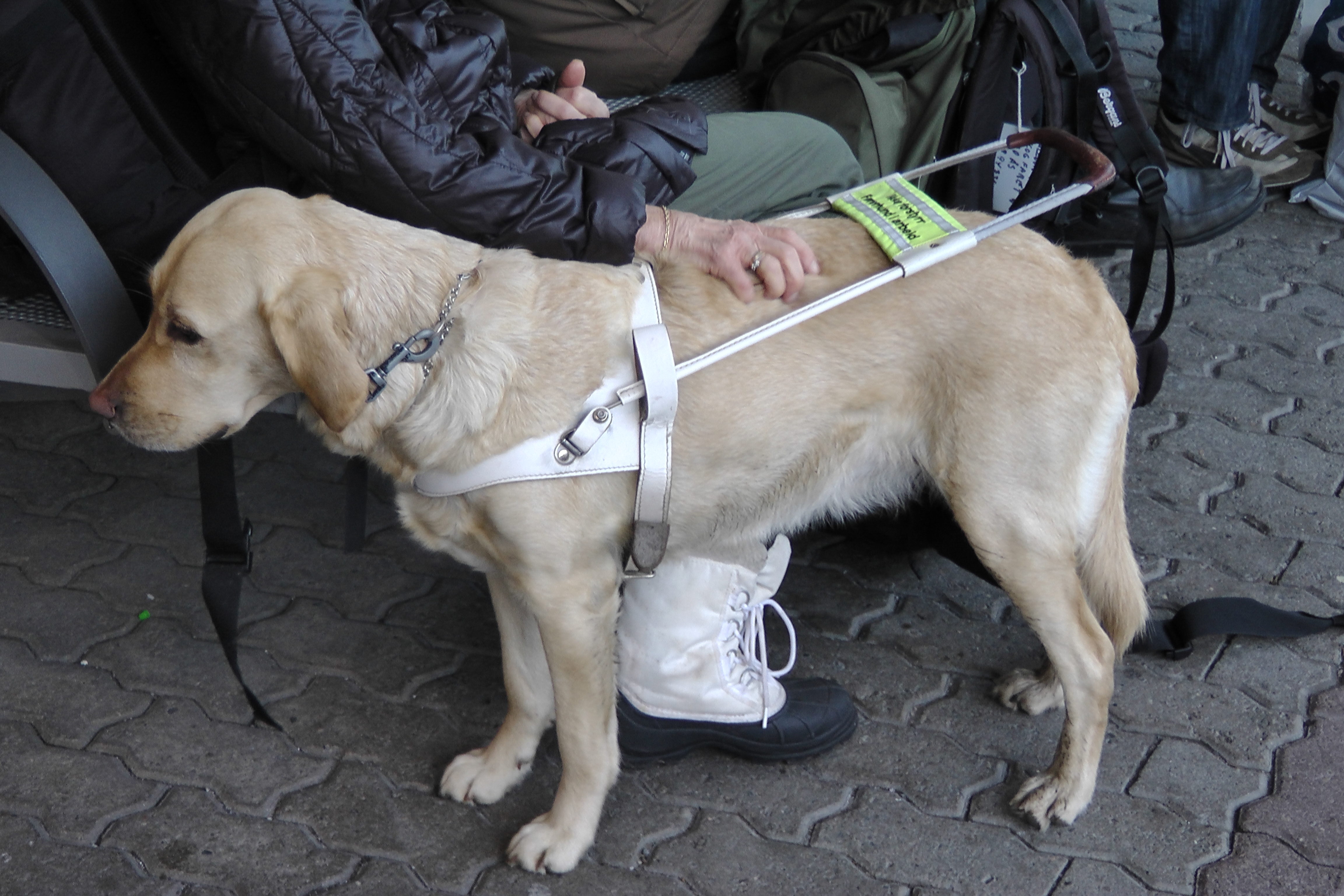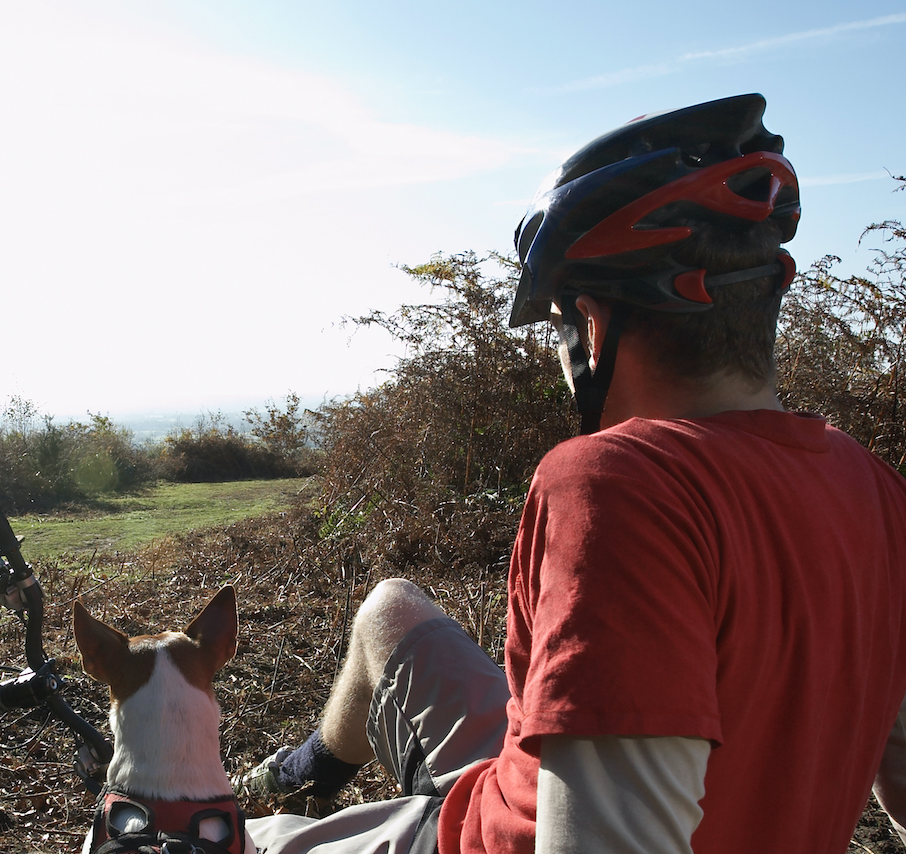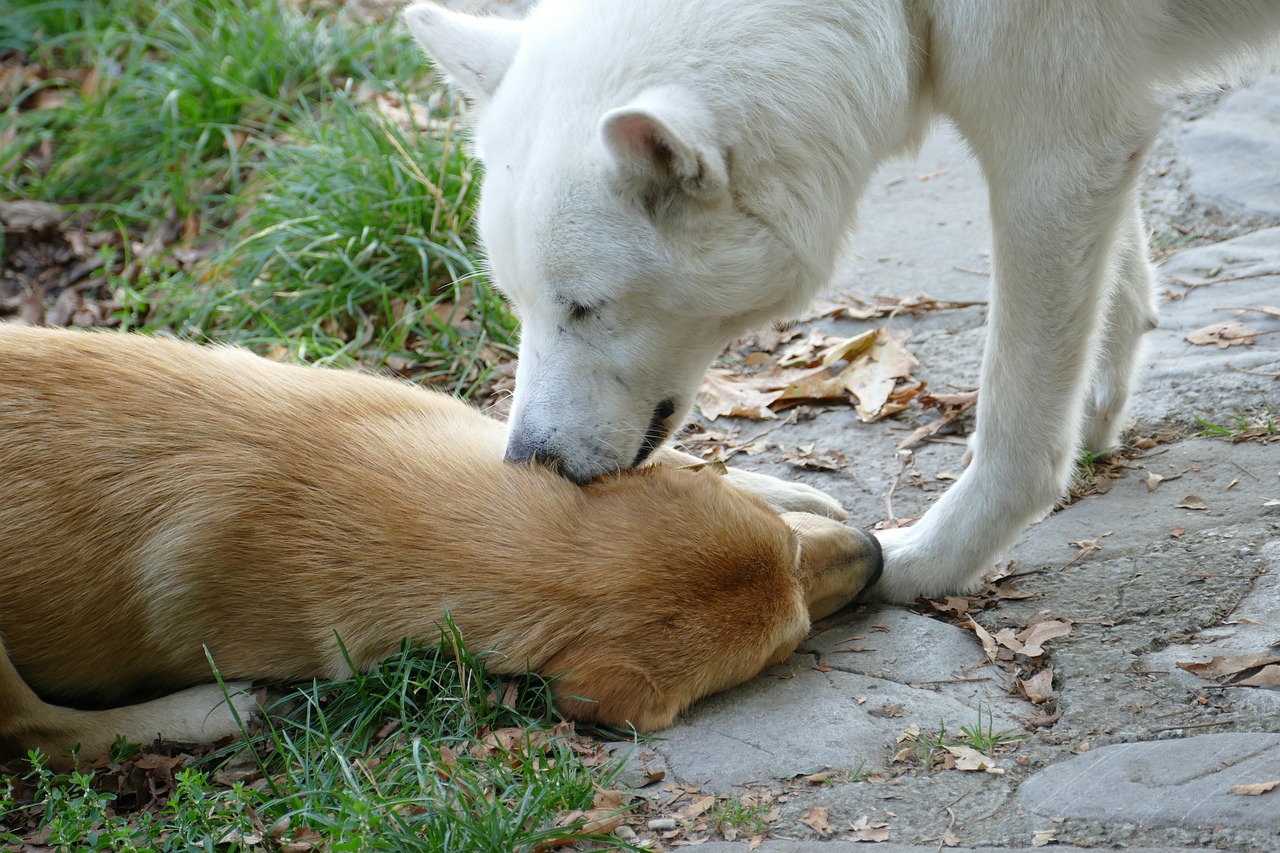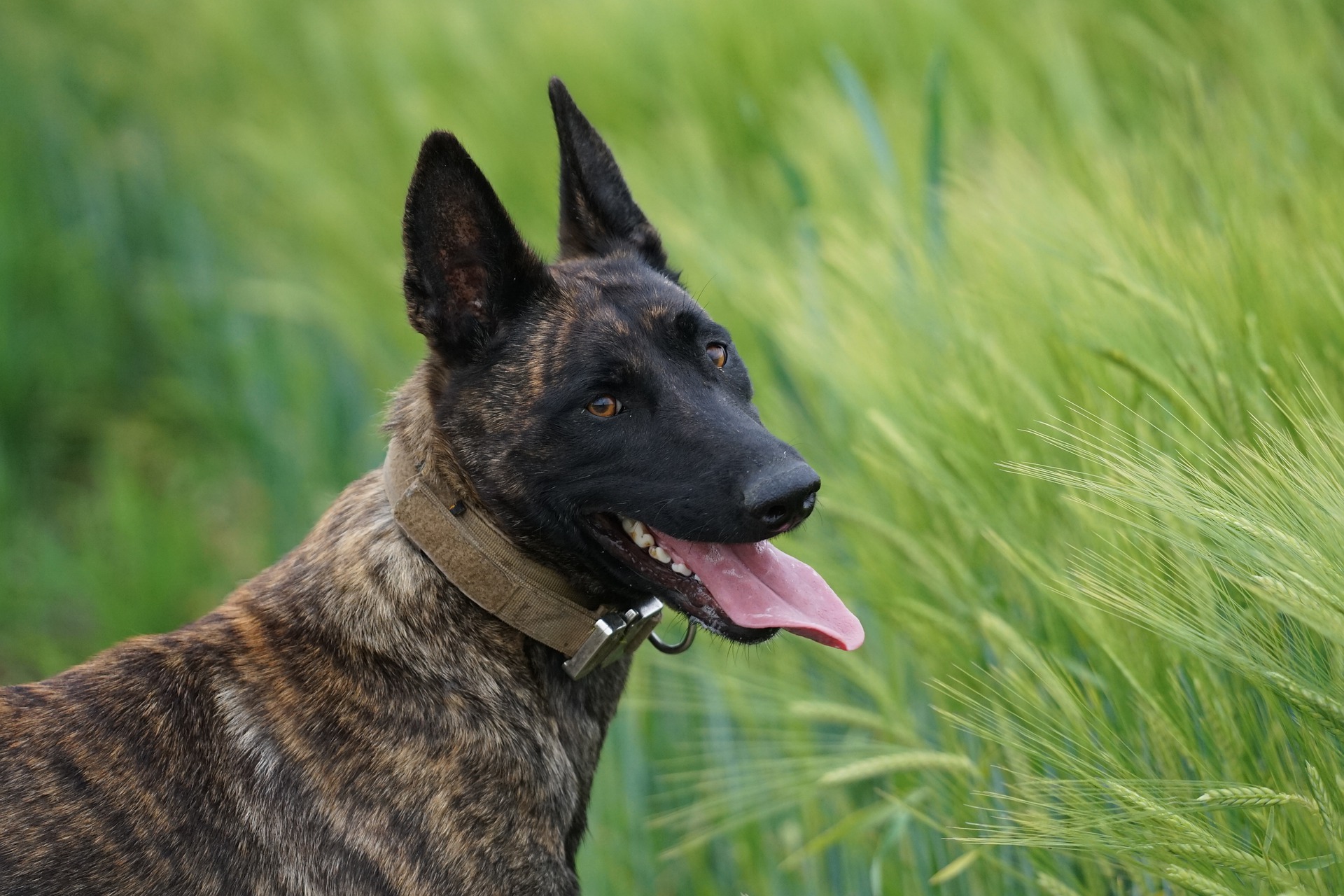- What Are Mobility Dogs?
- What Tasks Can Mobility Dogs be Trained to Perform?
- Who Can Benefit From Mobility Dogs the Most?
- What Features Should a Mobility Assistance Dog Have?
- Health Condition
- Best Mobility Service Dog Breeds
- What About the Training Process?
- When Can you Start Training a Mobility Dog?
- Do Mobility Dogs Have to Wear a Special Equipment?
- What Do You Need to Do as a Handler to Keep Your Mobility Dog Physically and Emotionally Fit?

There are different types of service dogs, that provide invaluable help to their handlers, performing a variety of tasks. These tasks must be related to the handler’s disability and maybe both physical and mental. A type of service animal whose assistance plays a very important role in the lives of their handlers is mobility dogs.
We will let you know what the term “mobility dogs” means, what tasks these dogs can be trained to perform, why their assistance is crucial for the normal life of their handlers, and what factors you need to consider if you would like to get a mobility assistance dog.
What Are Mobility Dogs?
Mobility Assistance Dogs are a type of service dogs primarily trained to help their handlers to move from one place to another, including using help devices like canes, wheelchairs, scooters...etc. In other words, these dogs help their handlers with the so-called locomotion. However, this definition does not feature all tasks that a mobility service dog can perform and all conditions whose symptoms these dogs can mitigate. Basically, mobility dogs can operate as a support system and help their owners in all daily activities at home or while in public. The tasks they perform are related to their handler’s specific condition. Hence mobility dogs are trained to suit the particular needs of their handler.
What Tasks Can Mobility Dogs be Trained to Perform?
Mobility Dogs can be trained to:
-
pull a wheelchair;
-
provide their handler with balance support when they are injured, mobile impaired, or dizzy;
-
help their handler sit back in their wheelchair or stay on their feet after a faint;
-
stay/lay under their handler’s legs or entire body to protect them after they had a blackout and fell on the ground;
-
protect their unconscious handler’s body while in public and preventing them from being walked on;
-
help their handler to turn over if they have fallen and get access to the assistive devices;
-
bring their handlers medication;
-
retrieve fallen, dropped, or hard to access objects;
-
open/close doors or drawers;
-
turn on/off lights;
-
press buttons, i.e. the button of an elevator, a phone button for dialing 911, doorbells;
-
notify another person like a housemate or a family member about their handler’s condition through barking or pawing;
-
help their handler with impaired mobility go to a safe place after experiencing balance/mobile issues;
-
cover their handler with a blanket to keep their body temperature within normal limits...etc.
As you can see mobility dogs can assist people dealing with different conditions, that make them unable to fulfill their daily tasks.
Mobility Dogs can be beneficial for people who suffer not only from physical but also from mental, neurological, and cardiac disabilities. These disabilities can lead to conditions like fatigue, vertigo, dizziness and cause mobile, balance, or stability impairments. Since these conditions interfere with the person’s ability to rely on themselves in their daily life and fulfill tasks independently, the assistance of mobility dogs and any kind of assistance animals is crucial.
Who Can Benefit From Mobility Dogs the Most?
People with the following conditions may benefit from the assistance that mobility dogs provide the most:
-
arthritis, joint, spinal, and muscle disorder;
-
cardiac disorders like POTS (Postural Tachycardia Syndrome)- some symptoms like headaches, blurred vision, chest pain, shaking and breath shortness, may prevent the individual from remaining stable on their feet and keeping their balance;
-
brain injures;
-
neurological disorders like Alzheimer, Epilepsy, Parkinson disease..etc;
-
strong migraines and fibromyalgia- some symptoms of fibromyalgia are pain all over the body, fatigue, headaches, tiredness;
-
multiple sclerosis- some symptoms are: vision problems, fatigue, muscle spasms, stiffness, pain, mobility issues;
-
cerebral palsy- possible symptoms are weak arms or legs, uncontrolled movements, muscle spasms, tremors...etc.;
-
Spinal Bifida- symptoms can be: weakness or paralysis of the legs, loss of skin sensation in the legs...etc;
-
vertigo, balance issues;
-
conditions caused by side effects of prescribed medication;
-
coordination difficulties.
There are many conditions and disabilities that may lead to mobile or balance impairments. Since each individual has specific needs, based on their condition and lifestyle, mobility dogs need to go through specific training, designed to match the needs of the individual.
If you consider getting a mobility dog, you should pay closer attention to a few important factors before you proceed further.
What Features Should a Mobility Assistance Dog Have?
There are two types of features that a dog should possess to be a good mobility dog:
1. Physical features;
2. Behavioral features;
When it comes to physical features a good mobility dog should be large - at a minimum of 23-24 inches tall, and should weigh at least 25 kg / 55 lbs. If the mobility dog is expected to help а large man/woman, his/her recommended weight is over 45 kg / 100 lbs. The canine should be tall at a minimum of 30 inches or more. You also need to consider the nature of the tasks that the dog will perform when choosing his/her size. If you are looking for a canine that will pull a wheelchair or you are likely to lean on him/her during episodes, he/she should be of a larger size.
Other physical features are related to the dog’s structure. A good mobility dog should have a solid structure, to be balanced with legs of the same length, quite muscular, but not too much. They need to have strong bones, but not too heavy, and have a healthy and balanced appearance in general.
Mobility dogs have to be able to assist their handler all day long, be loyal, and responsive, and very calm. They should not feel anxious or stressed due to the tasks they perform.
Behavioral features that a good mobility dog should possess are stable temperament, intelligence, and good personality. The dog must not be hyperactive, too lazy, to become afraid easily, and extremely important- he/she must stay focused on his/her handler. Dogs that are easy to distract and ignore their handlers, may miss behavioral changes and symptoms that can occur. Since service dogs are considered “medical equipment” they have to focus exclusively on their handler and resist any distractions in their surroundings. Mobility dogs should be trainable and easy-going.
Health Condition
Since the physical characteristics are essential for mobility dogs to fulfill their tasks successfully you need to ensure that your future service dog is in perfect health condition. Over-bred dogs are likely to suffer from different health issues. It is recommended that you require a health certificate as proof of the health condition of your future furry friend. Any health or genetic illness may affect the ability of the dog to perform the needed tasks effectively.
Best Mobility Service Dog Breeds
The breeds deemed some of the best as mobility service dogs are: the Retrievers (Golden Retriever and Labrador Retriever), the German Shepherd, the Doberman Pinscher, the Bernese Mountain Dog, The Rottweiler, the Standard Poodle, the Newfoundland...etc. For more detailed information about the best mobility service dog breeds you can check our article here.
What About the Training Process?
As already mentioned above a good mobility dog should be specially trained to meet certain needs and perform specialized tasks, that usually exceed the basic obedience and social skills. This statement fully applies to situations when the handler experiences dizziness or is unconscious and unable to give their dog a command. A good mobility dog should perform the necessary tasks even without a cue word given by their handler. The behavior in public places should also be appropriate and focused solely on the handler’s needs. You need to check carefully the organizations that provide mobility service dogs and evaluate their legitimacy as well as the skills of their trainers. Some organizations engaged in training mobility dogs are:
Medical Mutts
4 Paws For Ability
Mobility Service Dogs- West Coast Project (MSD-WCP)
New Horizons Service Dogs
Assistance Dogs International
Animal Farm Foundation
Service dogs in the US are subject to the ADA (Americans with Disabilities Act) and ADA allows handlers to train their own service dogs. Please note that you need to invest time, energy, and commitment if you decide to go this way.
When Can you Start Training a Mobility Dog?
A dog must be at least 6 months old to be recognized as a service dog. However, you can start the training at a young age- a few weeks, but not less than 8. You need to remember, that demanding tasks like pulling a wheelchair require a developed bone structure and closed growth plates. In general, a dog should be at least 2 years old to be able to work as a mobility dog at full capacity.
Do Mobility Dogs Have to Wear a Special Equipment?
ADA does not require service animals to wear a vest, ID tag, or harness. However, due to the nature of the tasks they perform, mobility dogs are likely to wear a harness with a sturdy handle, that will help the handler reach the canine at all times and keep their balance. The harnesses that mobility dogs wear are specially designed to fit both the dog and the handler and distribute the tension across the entire body of the dog. Wearing a specialized harness will help the dog perform his/her tasks more efficiently.
What Do You Need to Do as a Handler to Keep Your Mobility Dog Physically and Emotionally Fit?
As the tasks performed by mobility dogs are extremely valuable and may be overwhelming for the dog, the handlers need to secure their furry friends a lot of care, regular veterinarian visits, healthy food, and much love. You always need to show your paw friend that he/she is doing a great job, praise him/her and reward him/her with treats and toys. Due to their work, mobility dogs need quality time to rest and relax. Supervise your dog regularly, ensure that he/she is healthy and happy. The stronger the bond between a dog and a handler is, the more efficient the task performance will be.










